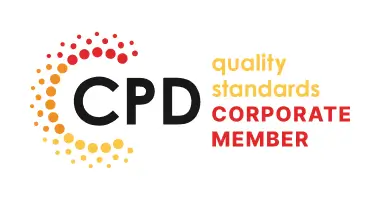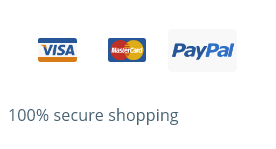
Every successful business knows the importance of having a strong team. Organizations thrive when everyone is firing on all cylinders and working towards shared goals. But finding the right people is often a difficult and time-consuming process. What’s more, retaining your top talent can be equally tricky.
So, what’s the solution? Recruitment software cuts out the legwork and helps you find the best employees more quickly. It also guarantees a more positive overall candidate experience, meaning employees are more likely to stay in their roles. But what is recruitment software and how does it help your business?
Table of Contents
How does recruitment software work?
By using recruitment software you can handle tasks throughout the hiring process and achieve quicker access to skilled employees. Recruiters aren’t strangers to using software when hiring, but this usually involves utilising multiple tools.
Recruitment software combines functionality into one package, from setting up your job advertisements to scheduling interviews and onboarding. Some solutions go even further, with even more in-depth analysis and insights. The best software can augment the recruitment process with the following features:
– Access to detailed reports covering areas such as friend referrals and hiring velocity.
– The option to create scorecards to make sure the selection process is fair and legal.
– Easy integration with other HR tools, creating a centralised space for data.
Common recruitment challenges
Why do so many organizations view recruitment software as an essential tool? If you’re struggling with any of the following issues, recruitment software might be the solution for you.
– A sluggish recruitment process – Your recruitment processes need to deliver the right appointments for your business. But processes can be time-consuming. Sometimes, you need to fill a post urgently, such as for short-term cover. Your systems might not be flexible enough to handle these scenarios. This could result in unfilled vacancies and backlogs of work.
– Difficulty finding the best candidates – There’s nothing worse than investing time and effort and hiring the wrong people. While a candidate may look good on paper, they might not be a strong fit in the office. Distinguishing the best candidates without a data-driven approach will be challenging.
– Being overwhelmed with resumes – It’s easy to get swamped with applicants When you’re advertising a popular position. Looking through each application manually can be very time-consuming. Finding a short list takes time, which could be spent on more valuable tasks.
– Juggling repetitive tasks – The hiring process involves many manual tasks, such as sending emails, scheduling interviews, and updating hiring boards. These tasks all distract from other priorities.

















7 Benefits of using recruitment software
There are hurdles to navigate, but how can recruitment software help you overcome them? Here is a list of benefits that highlight why recruitment software is so useful.
1. Slash recruitment costs
External recruitment without the aid of software includes various costs. Firstly, there is advertising to consider. You’ll be paying for space on job boards, as well as marketing to get people to your listings. Handling and overseeing this process can require an extensive team. This is especially true when dealing with large volumes of applications.
These costs can quickly add up and become expensive. Luckily, recruitment software makes cost-cutting, without damaging the candidate experience, simple. Thanks to features such as automation, software can handle key tasks on your behalf. This negates the need to expand your team to keep up with a recruitment campaign.
2. Cut-out manual tasks
Earlier we reflected on how manual tasks, although essential, can distract from more valuable activities. This is one of the major reasons that organizations invest in recruitment software. The best solutions are capable of handling activities at every stage of recruitment.
For example, you could create an automated email to respond to new applicants, letting them know that their application has been received. Or, you might have a tool to schedule interviews with shortlisted candidates. Automation saves precious time and enables your team to focus on more challenging tasks.
An automated approach also makes the job of the recruitment team more enjoyable. Manual tasks can be monotonous and dull. There’s a risk that employee’s minds might wander, leading to mistakes. Recruitment software will never lose concentration, cutting out the risks.
So, you ensure accuracy while keeping your team happy – it’s a win-win!
3. A streamlined interview process
A smooth interview process is key for multiple reasons. It’s an opportunity to get to know candidates on a deeper level and gauge their strengths and weaknesses. It also influences their opinion of you as their prospective employer. After all, a smooth and well-organised interview shows professionalism and demonstrates a strong corporate culture.
But when juggling multiple recruitment tasks at once, there’s a risk interviews will be rushed. Happily, recruitment software helps to create a more streamlined interview process. Software provides a centralised space where hirers gain easy access to applicant profiles. At the click of a button, you can disqualify a candidate or move them to the interview stage.
As mentioned, recruitment software can also schedule interviews for you. Dynamic solutions can automatically timetable interviews with candidates from the system. The software will look at the hirer’s calendar, alongside a candidate’s availability, and automatically book an interview.
4. Reduced time to hire
According to research by HRD Connect, time to hire is currently at an all-time high. On average, it takes organizations as many as 44 days to fill vacancies.
Ultimately, the sooner you can fill a gap the sooner your organization can deliver at full capacity. But there is a difference between efficiency and rushing. One is more likely to guarantee a quality hire, while the other might result in choosing a poor fit. Software can help you fill vacancies more quickly with the right people.
We’ve reflected on the benefits of automation, but this is just one way you can reduce the time to hire. Recruitment software also provides access to tools that allow employers to visualise the recruitment pipeline. From here, hirers can spot bottlenecks and organise processes.
5. Access to recruitment analytics
Data is king for modern businesses. Thanks to data analysis organizations can power their marketing, sales, and customer services. You already collect lots of information when hiring new employees. Why not use this data to level up your recruitment process?
Recruitment analytics can unlock your data, providing powerful insights and reports. From a central dashboard, you can view key recruitment metrics, such as:
– Time to hire
– Time to onboard
– Quality of hire
– Cost per hire
You can keep track of these metrics and spot areas where you’re off-track. You can pinpoint where improvements are needed and work to get back on track. You can continue to monitor metrics as you carry out optimizations, and make sure you’re headed in the right direction.
6. Improved candidate experiences
A candidate’s overall experience is linked to your employee retention rates. A strong experience makes sure that future employees have a positive impression from day one. They’ll be more likely to stick around and feel content in their role. That’s why, when planning your recruitment process, it’s useful to put yourself in the shoes of an applicant.
When you apply for a job, you want the simplest process possible. That means an application form that is accessible from all devices with clear input fields. You hope for a responsive employer that keeps in touch through every stage of employment. If you succeed in getting a role, you want an onboarding process that helps you settle in.
Recruitment software arms you with the tools to make sure candidates get the best experience possible. Listed below, are just some of the ways software can keep your applicants happy:
– They provide access to landing page designers, helping you build accessible and attractive pages for your listings.
– They automate communication, making sure candidates are always kept ‘in the know’.
– They provide a smoother onboarding process, ensuring candidates have access to the materials they need to succeed in their roles.
7. Greater data security
Security is a key factor in recruitment. You’ll collect many different forms of sensitive information from many applicants. If this information was to leak, it could damage employee confidence. You may also be subject to legislation that controls how you manage data. To keep on the right side of the law and maintain employee confidence, you must keep data secure.
Recruitment software provides you with the necessary protections to secure applicant data. All data is housed within encrypted databases. Users can also control access so that data is only viewed on a ‘need to know’ basis.
Elevate your recruitment process
Your employees are the backbone of your organization. But finding top talent isn’t always easy. So, why not equip yourself with the tools to build the strongest team possible?
As we’ve explored, recruitment software streamlines your hiring process. Thanks to features such as automation, you’ll spend less and hire more quickly. What’s more, you’ll build a stronger overall applicant experience. This means that when you find talented employees they’re more likely to stick around.
So, why not take the leap? Start assessing your needs and find the perfect software solution for you.










